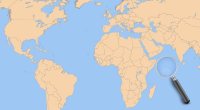Parione
in Roma, ItalyCategory: Attraction
 8 views
8 views  0 shares
0 shares  0 comments
0 comments
 set bookmark!
set bookmark!
Created/changed by:
System
Address details
Santa Maria in Vallicella, 00186 Roma RM, Italy Print route »Phone & WWW


Business hours
Info
Parione is the VI rione of Rome. It is located in Municipio I.Its name comes from the fact that in the area there was a huge ancient wall, maybe belonging to the stadium of Domitianus; the nickname people gave to this wall was Parietone ("big wall" in ancient Italian), from which the name "Parione". Its logo is a rampant griffon, a Greek mythological creature with the head of an eagle and the body of a lion. It was chosen as a symbol of pride and nobility.
During Antiquity, it belonged to the IX Augustan region called Circo Flaminio. In this area Domitianus built his stadium and an Odeon (Odeum in Latin), for musical and poetic competitions. Pompey built his curia.
Around the 1200 the area was called Parione e S. Lorenzo in Damaso and the population kept on increasing until the 1400, when it obtained a great importance thanks to the paving of Campo de' Fiori, that soon became an important economic center.
Under Sixtus IV (1471-1484) the rione lost its chaotic look, typical of the Middle Ages, for a cleaner and tidier one, typical of the Renaissance. Recovering buildings, enlarging streets, building the new bridge "ponte Sisto" connecting Trastevere and Parione, improved the quality of the area.
Thanks to this renewal, urbanization increased between the 1400 and 1500. In the same period, several artists were asked to renew the front of the greatest buildings: this habit was born in the northern Italy and was spreading in that period. In 1500 most of the commercial activity slowly moved from Campo de' Fiori to Piazza Navona, that was the favorite place since it was wider.
From 1574 to 1674, the appearance of Piazza Navona changed vastly, thanks to the work of Bernini, Borromini, and Bramante.
From this period until Rome became capital of unified Italy in 1870 there were no major changes but the opening of Corso Vittorio Emanuele II, a great street having a flexuous track in order to avoid the already existing palaces. If one palace was jutting, its front was moved backwards to preserve it.





